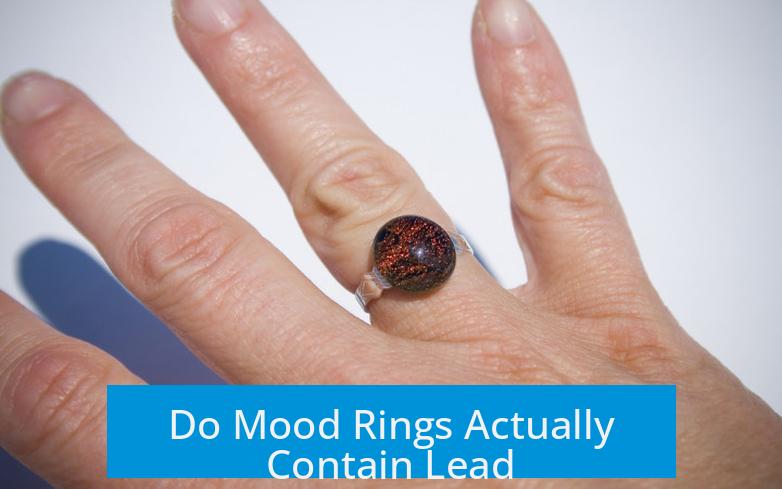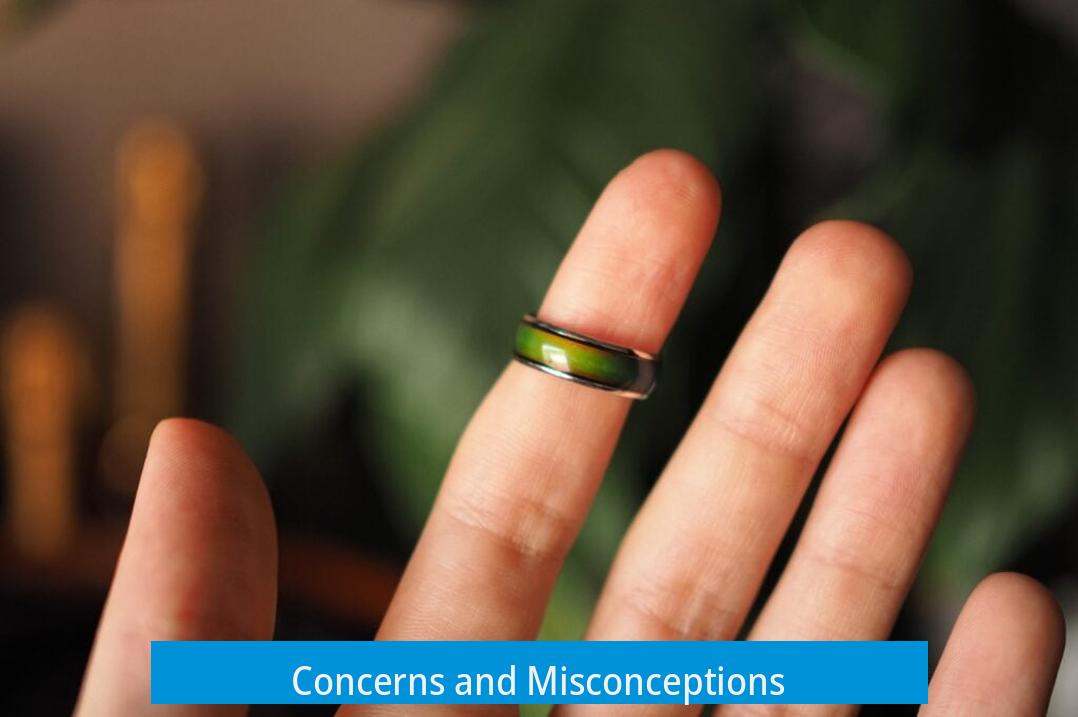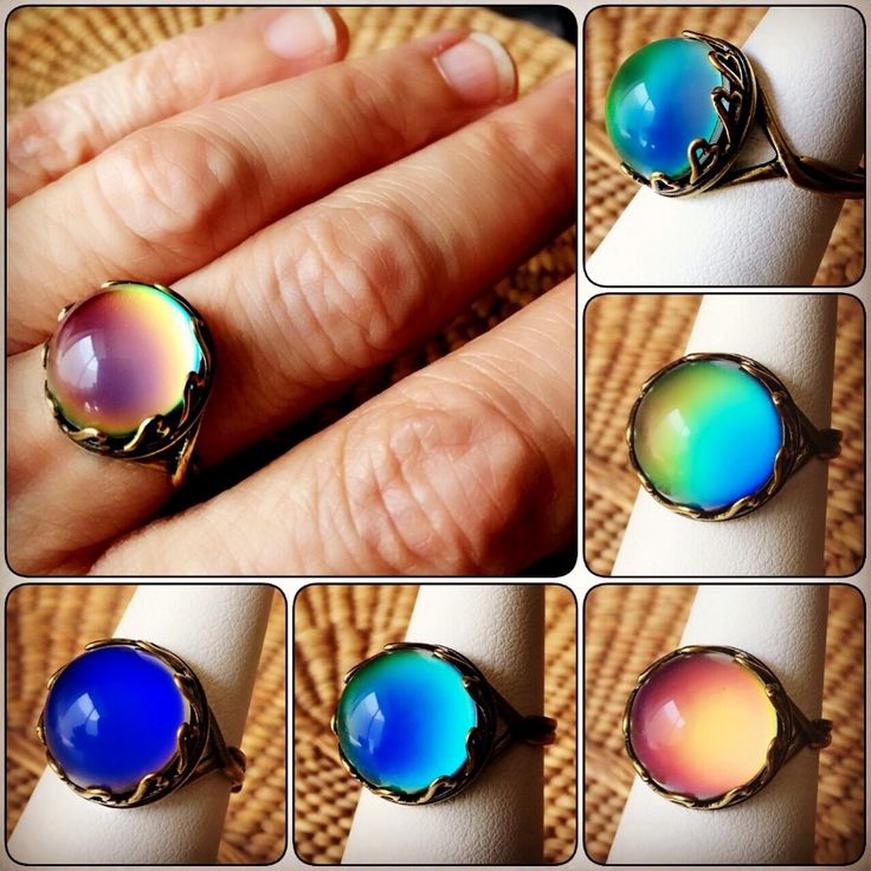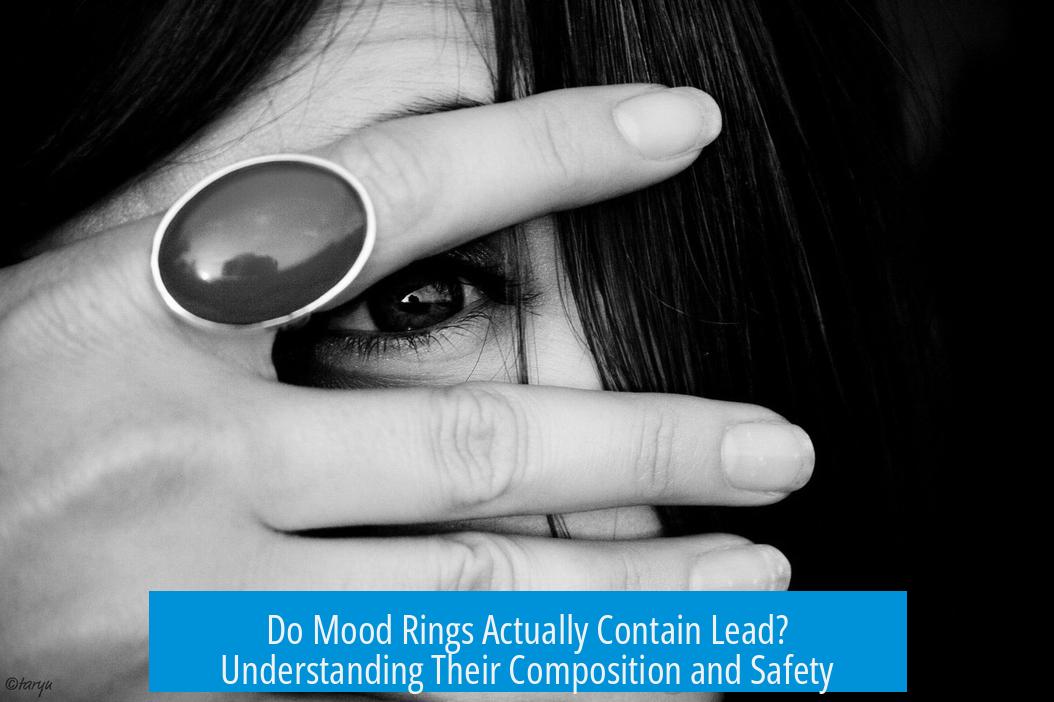Do Mood Rings Actually Contain Lead?

Mood rings do not actually contain lead. Their color-changing feature comes from liquid crystals inside a glass or quartz casing, which respond to temperature changes, not mood or any chemical exposure. The liquid crystals used are typically free of lead compounds.
Composition of Mood Rings
Mood rings consist of an outer shell made from glass or quartz. Inside this shell, liquid crystals serve as the active element that changes color. These crystals shift their molecular structure with temperature changes, causing varying colors to appear.
Presence of Lead in Liquid Crystals
The liquid crystals inside these rings generally do not include lead or any toxic heavy metals. Lead is not a component of the thermally sensitive pigments used. Manufacturers commonly avoid hazardous materials in such consumer products to ensure user safety.
Even if one were to break open a mood ring, the liquid crystals inside are not known to be harmful when handled externally. Direct ingestion or prolonged skin exposure to the internal liquid is not advisable but normally, typical use poses no risk.
How Mood Rings Work
- Temperature-sensitive pigments inside the ring change color based on heat.
- This causes the ring’s appearance to vary, creating the illusion of mood detection.
- No chemicals in the ring respond to emotional or psychological states.
Concerns and Misconceptions

Some users humorously report unusual sensations or claims about radioactivity with mood rings. There is no evidence supporting radioactivity or lead contamination. Such claims are not supported by scientific data.
For those interested in more detailed chemistry, resources such as chemistryislife.com provide further insights but do not highlight lead as a component.
Key Takeaways
- Mood rings work by temperature-sensitive liquid crystals, not mood detection.
- These liquid crystals typically contain no lead or other toxic metals.
- Normal external use of mood rings is safe and poses no lead exposure risk.
- Breaking or ingesting the inner contents is not recommended but unlikely to cause lead poisoning.
Do Mood Rings Actually Contain Lead? Let’s Clear the Mystique
Mood rings: those quirky little accessories that claim to reveal your emotional state by changing colors. But amidst the fun and mystery, a nagging question creeps up—do mood rings actually contain lead? Let’s cut to the chase: mood rings typically do *not* contain lead. They are safe for everyday wear, far from the hazardous jewelry some might fear.
Now, don’t just take my word for it. Dive in as we explore the curious chemistry and fabrics of mood rings, debunk myths, and understand why your mood ring is probably harmless—despite making your Geiger counter beep, at least jokingly.
What Are Mood Rings Made Of Anyway?
First off, mood rings aren’t magic; they’re mechanical devices with a splash of chemistry. The outer shell is usually crafted from glass or quartz. Inside this stylish casing lies the heart of the mood ring: liquid crystals. These aren’t your everyday crystals—these are special compounds that respond to temperature changes by altering their structure and, thus, their color.
The detailed blend of these liquid crystals isn’t a closely guarded secret, but a quick Google search won’t yield a precise chemical formula either. What we know is that these liquid crystals are designed to be thermally sensitive pigments, reacting ONLY to temperature fluctuations—not your emotional rollercoaster.
Lead—The Missing Villain in Mood Rings

So, is lead lurking in those sparkling mood rings? The short answer revealed by experts is no. The liquid crystals inside are generally created without lead. The outer glass or quartz shell, the other major component, is also typically free of lead unless you pick up cheap or counterfeit versions (which is a different story).
Why does this matter? Lead is toxic, especially when ingested or absorbed through wounds. But casual contact? The risk is minuscule, almost nonexistent. Unless you plan on cracking open your mood ring and drinking its insides (seriously, don’t), you’re safe.
Moreover, don’t be the weirdo licking the ring before every use or rubbing it on open wounds. This is where potential harm could sneak in, but normal wearing is harmless.
The Truth About Mood Rings and Their Magical “Mood” Changes
Ever noticed how a mood ring turns colors like blue, green, or black and people say it reflects your current feelings? That’s a neat trick of science, not psychic power. The color changes occur due to temperature shifts—the liquid crystal’s molecular structure changes when warm or cold, leading to a beautiful dance of colors.
It means that if your finger is cold, your mood ring might turn black, but it isn’t signaling your heartache. Just chilly fingers. And when your finger warms up, the ring changes color. This cycle repeats as your temperature fluctuates, creating the illusion of a mystical mood detector.
The “Is It Radioactive?” Myth—Let’s Laugh and Move On
Internet humor has had a field day with mood rings. There’s a popular joke: “My mood ring makes my Geiger counter go wild—is it generating positive energy or am I just negative?” Thankfully, no mood ring is radioactive. It’s just a funny side note to the ring’s playful mystique.
As for lead or other harmful substances, scientists and manufacturers haven’t flagged mood rings as hazardous. So rest easy—the only thing radioactive about your mood ring is perhaps your own enthusiasm.
Want to Dig Even Deeper? Chemistry is Waiting
For those curious cats who want the full chemistry lowdown, this article provides a fascinating peek under the hood.
While it doesn’t particularly highlight lead usage, it dives into how liquid crystals operate and why their temperature sensitivity is the foundation of mood rings’ color magic. It’s well worth a browse for science buffs or anyone intrigued by the blending of physics and fashion.
Helpful Tips When Wearing Your Mood Ring

- Wear it as intended: Mood rings are jewelry, not chemical experiments. Avoid intense physical abuse or cracking it open.
- Keep it clean: Wipe your mood ring occasionally. Dirt can dull the stone’s sparkle and confuse those color shifts.
- Avoid moisture and chemicals: Water, lotions, or perfumes may damage the liquid crystals or glass casing.
- Replace if damaged: If you see cracks or leaks, retire that mood ring. Broken pieces might expose the liquid crystal, which is non-toxic but best avoided.
Final Thoughts: Should You Worry About Lead in Mood Rings?
The takeaway is straightforward: mood rings do not usually contain lead or anything hazardous under standard manufacturing and use. The liquid crystal’s color-changing secret lies in temperature sensitivity, not toxic metals.
If you treasure your mood ring, wear it proudly—it’s an affordable and charming accessory that adds a sprinkle of chemistry to your style. Just don’t expect it to read your mind or analyze your relationships. It’s a ring, not a counselor.
Next time someone asks if your mood ring is dangerous, you can confidently say no, and chuckle because the real magic is in the science, not lead or lead poisoning myths.
Do mood rings contain lead in their liquid crystals?
No, mood rings usually contain liquid crystals that are free of lead. The color-changing part is made from temperature-sensitive materials, not lead-based compounds.
Is it dangerous to wear a mood ring due to lead exposure?
Wearing a mood ring normally is safe. The crystals are sealed inside glass or quartz, so you won’t come into contact with any harmful substances like lead.
Can breaking a mood ring expose you to lead?
Even if broken, mood rings don’t typically contain lead. There is no evidence that their materials include hazardous lead that could cause harm if exposed.
Why do mood rings change color if not because of mood?
Mood rings change color due to temperature shifts. The liquid crystals respond to heat, not to your emotions or mood changes.
Are there any risks of handling or licking a mood ring?
Handling or wearing a mood ring is safe. However, licking or breaking it could cause exposure to chemicals, though lead is not normally one of them. Avoid ingesting any part of the ring.





Leave a Comment